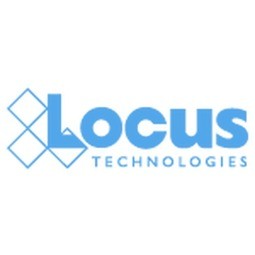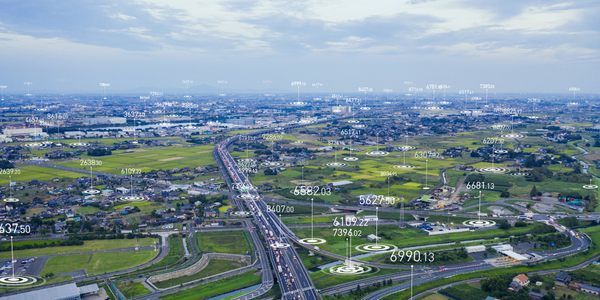Honeywell achieves improves data quality, environmental risk reduction, and overall process cost reduction of over 50% with Locus’ EIM

Customer Company Size
Large Corporate
Region
- America
- Others
Country
- United States
Product
- Locus EIM
Tech Stack
- Software as a Service (SaaS)
Implementation Scale
- Enterprise-wide Deployment
Impact Metrics
- Cost Savings
- Environmental Impact Reduction
Technology Category
- Platform as a Service (PaaS) - Data Management Platforms
Applicable Functions
- Quality Assurance
Use Cases
- Regulatory Compliance Monitoring
Services
- Cloud Planning, Design & Implementation Services
About The Customer
Honeywell is a Fortune 500 company that operates in various industries, including aerospace, building technologies, performance materials and technologies, and safety and productivity solutions. The company is a diversified technology and manufacturing leader, serving customers worldwide with aerospace products and services, control technologies for buildings and industry, turbochargers, and performance materials. Honeywell was in need of an enterprise remediation data management system that could protect and preserve the integrity and quality of their substantial investment in generating site remediation data, have it available for future use, and assure business partners that legacy data is of reliable quality.
The Challenge
Honeywell, a Fortune 500 diversified technology and manufacturing leader, was in need of an enterprise remediation data management system. The company required a system that could protect and preserve the integrity and quality of their substantial investment in generating site remediation data, have it available for future use, and assure business partners that legacy data is of reliable quality. Their existing data resided in stand-alone consultant systems, spreadsheets and paper records that was not readily available and shared within the company.
The Solution
Honeywell implemented Locus EIM to improve their environmental data management process for remediation locations throughout the U.S. and in selected overseas locations. An EIM site was set up for all active projects. Analytical and technical data generated in the course of on-going site activities were entered into EIM. All mission-critical legacy data residing in stand-alone consultant systems were also migrated into EIM. Data management in conformance with Honeywell SOPs, including adherence to valid value and electronic data delivery requirements, were implement and required of subcontract vendors and laboratories. Honeywell applied the rigorous and well-documented Six Sigma quality-improvement approach to the complex, highly heterogeneous, and mission-critical process of remedial site environmental data management.
Operational Impact
Quantitative Benefit

Case Study missing?
Start adding your own!
Register with your work email and create a new case study profile for your business.
Related Case Studies.

Case Study
Remote Monitoring for Environmental Compliance
Emerson wanted to provide a connected environmental analyzer to their customers. They wanted to leverage IoT technologies to provide a software solution that was easy to use, real-time and centralized. Compliance with pollution control board guidelines and the ability to remotely calibrate and troubleshoot these devices was the primary objective. Requirements - Centralized Remote Monitoring. - IoT Based Smart Environmental Analyzers. - Remote Calibration and Troubleshooting. - User Friendly Application. - Reporting & Dashboards. - Compliance with pollution control board guidelines.

Case Study
ELI LILLY ADOPTS MICROMEDIA’S ALERT NOTIFICATION SYSTEM
Pharmaceutical production is subject to a strict set of enforced rules that must be adhered to and compliance to these standards is critically necessary. Due to the efforts of WIN 911’s strategic partner Micromedia, Lilly was able to adopt an alarm notification infrastructure that integrated smoothly with their existing workflows and emergency hardware and protocols. These raw energy sources enable the industrial process to function: electricity, WIN-911 Software | 4020 South Industrial Drive, Suite 120 | Austin, TX 78744 USA industrial steam, iced water, air mixtures of varying quality. Refrigeration towers, boilers and wastewater are monitored by ALERT. Eli Lilly identified 15000 potential variables, but limitations compelled them to chisel the variable list down to 300. This allowed all major alarms to be covered including pressure, discharge, quantity of waste water discharged,temperature, carbon dioxide content, oxygen & sulphur content, and the water’s pH.

Case Study
IoT Solutions Give Commercial Fishing Real-time insights
Technology to support vessels in the commercial fishing industry had not changed significantly since the advent of radar. Over the past 40 years commercial fishing in the United States has continued to be one of the most active, yet regulated industries. The combination of federal regulations and lack of technology created an opportunity for Faria Watchdog to go-to-market with a solution.
Case Study
Nfairlending Case Study
Erin Goodall, vice president and director of compliance at Valliance Bank, was the sole member of the compliance team. She was responsible for analyzing all the bank’s fair lending data to identify redlining, disparities, and any potential violations of the Community Reinvestment Act (CRA), Home Mortgage Disclosure Act (HMDA) and other laws. This was a time-consuming process, taking up to 96 hours per quarter, in addition to her general compliance responsibilities. She also had to decipher what the results meant and spent hours creating reports to explain the insights to the board, management, and compliance committees.
Case Study
Digital Transformation of FOSIS through AuraQuantic Platform
The Solidarity and Social Investment Fund (FOSIS), a service of the Chilean Government, was faced with the challenge of standardizing its administrative processes to comply with the new regulatory framework established by the Law of Digital Transformation of the State (LTDE). The LTDE focuses on updating administrative procedures and document management in public administration through digital transformation. It also mandates that all communication related to administrative procedures between different public bodies must be carried out electronically. FOSIS had been using the AuraQuantic platform for over 14 years to automate different internal processes. However, with the introduction of the new LTDE framework, the institution needed to launch an ambitious project to align with the new regulations.
Case Study
Planters Bank Grows Securely With Arctic Wolf for Security Operations
Planters Bank faced significant challenges in managing and securing its diverse and distributed network infrastructure. The bank needed to fulfill audit and regulatory compliance requirements, particularly those outlined by the Federal Financial Institution Examination Council (FFIEC) and overseen by the Federal Deposit Insurance Corporation (FDIC). Additionally, the bank's IT team lacked the resources to achieve 24/7 monitoring, which left them vulnerable to potential threats and compliance issues. The existing piecemeal systems were insufficient for comprehensive monitoring, and the bank risked missing dangerous threats due to the lack of visibility and real-time insights.






